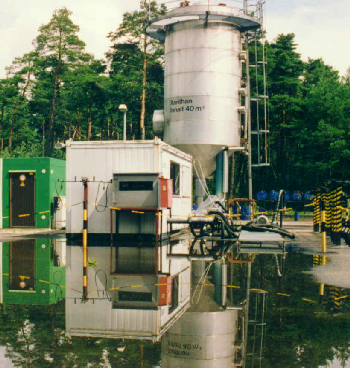Enhanced Oil Recovery

The production history of a petroleum reservoir may be devided into different phases. The first, where oil is flowing freely from the reservoir to the production well is the best known, but in most cases also the shortest. Very early in the life of a reservoir energy must usually be supplied to the porous medium which bears the crude oil, so that it continues to flow to the producing wells. This energy is brought into the reservoir by injection water or gas. With these secondary methods about 30 to 40 percent of the original oil in place my be recovered, while the rest must be left in the earth. In order to recover some of this oil as well, tertiary methods have been developed which are still the subject of research.
The forces that hold back the oil in the porous body of the reservoir are the interfacial tension between the different phases of oil, water and gas flowing in the porous medium and the viscosity of the crude oil. The interfacial tension may be overcome by injection of surface active agents (surfactants) or by the injection of a gas that is miscible with the crude oil (miscible flooding) using CO2 at high presssures). The viscosity of the oil may be reduced by applying heat to the reservoir, or the viscosity of the displacing phase may be adapted to the viscosity of the crude oil, which is accomplished by adding a water soluble polymer to the flood water (viscosifier).
W. Littmann "polymer flooding", Developments in Petroleum Science 24, Elsevier Amsterdam